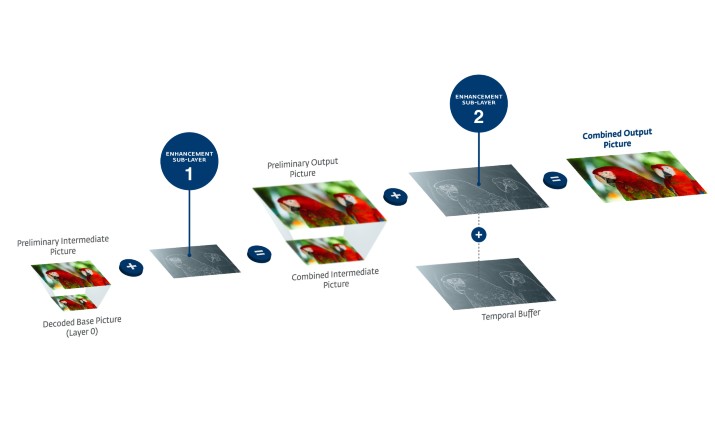LCEVC explainer: Why the enhancement codec could be a value-add for sports broadcasters in uncertain times

Meardi: It is already apparent that sports broadcasting could be one of the key markets for the technology.
There is no doubt that 2020 is shaping up to be a landmark year for broadcast codecs with a slew of new developments due to reach fruition.
One of the most significant is MPEG-5 Part 2 Low Complexity Enhancement Video Coding (LCEVC), which has been developed to bring extra compression efficiency and lower computational requirements to video workflows, including those for linear and streaming sports services.
In development for the last two years, LCEVC attained Draft International Standard status at MPEG’s virtual meeting in April. V-Nova’s CEO and co-founder, Guido Meardi, says that the company has been heavily involved in the project since its inception and believes that LCEVC has the potential to be a “game-changer for video codecs”.
“It is important to stress that it is radically different in approach from other codec standards,” explains Meardi.
“LCEVC is an enhancement codec that has been designed to improve the performance of all existing and future codecs, such as AVC, HEVC and the forthcoming VVC. Codec-agnostic, LCEVC can simultaneously improve compression efficiency and reduce processing power consumption. It can be deployed by means of software updates to existing encoders and players, and therefore does not require new hardware like conventional standalone codecs.
“With LCEVC it is possible to reduce the amount of data being delivered without compromising on quality, easing the effective management of vast concurrent traffic.”
“With its foundations in V-Nova’s P+ compression technology, LCEVC has already attracted strong interest from our customer base. We expect to be able to make several major announcements in the coming months, but it is already apparent that sports broadcast could be one of the key markets for the technology.”
It is not difficult to see why. There is, of course, the fact that sport has always been an important testing ground for new technologies, with live sports production and delivery providing ample opportunity to put them through their paces. But there is also the considerable expectation of robust high-quality, both among production teams and viewers at home.
When the loss of video quality during a match-point in tennis or penalty shoot-out in football could make all the difference between a good and bad viewing experience, there is no room for using technologies that are anything other than best-in-class.
As highlighted by Ofcom in its 2019 Media Nations report, the competition for eyeballs has intensified in recent times, with strong viewership for sports being maintained across channels and platforms. The report also emphasises the importance of the two- and four-year event cycles in sports – cycles that have been seriously interrupted by COVID-19, meaning that there is set to be an unprecedented cluster of major global sports events throughout 2021 and 2022.

LCEVC can simultaneously improve compression efficiency and reduce processing power consumption, according to V-Nova
As well as being a hugely tantalising prospect for currently sports-starved fans, this also heralds an opportunity for OTT service providers to earn a commercial advantage by the breadth and range of their content, and in terms of its consistency of quality.
In this regard, says Meardi, LCEVC will be able to help service providers cope with the sustained spikes in traffic levels that frequently accompany live sports.
He explains: “With LCEVC it is possible to reduce the amount of data being delivered without compromising on quality, easing the effective management of vast concurrent traffic – a need that is more acute with lockdown preventing groups from gathering to watch televised sport. All this means that it is very much a technology for these times. By bringing performance improvements to all video codecs, it will help service providers to improve their customer retention and reduce churn – aspects that will also endear them to advertisers in what is sure to be a more challenging commercial environment.”
LCEVC’s ability to improve the viewer experience regardless of mobile or IP network conditions is also in its favour, says Meardi: “Its capability to enhance the quality of experience no matter what the network conditions has already led to its incorporation in a new premium service in Africa, where 2G and 3G are still widely used. At the same time we also know organisations who are thinking about LCEVC in 5G broadcast use cases.”
With live sports currently on hold and the sports broadcasting sector contemplating a protracted period of uncertainty, Meardi concludes that “it makes sense to see what can be done in terms of investing in technology that can upgrade the user experience. LCEVC is the only new generation codec that can be deployed at scale in 2020 and it will be central in ensuring the best quality through congested IP networks, mobile and fixed. It is already available in software for a variety of platforms and we can help service providers and content owners to deploy it easily.”

